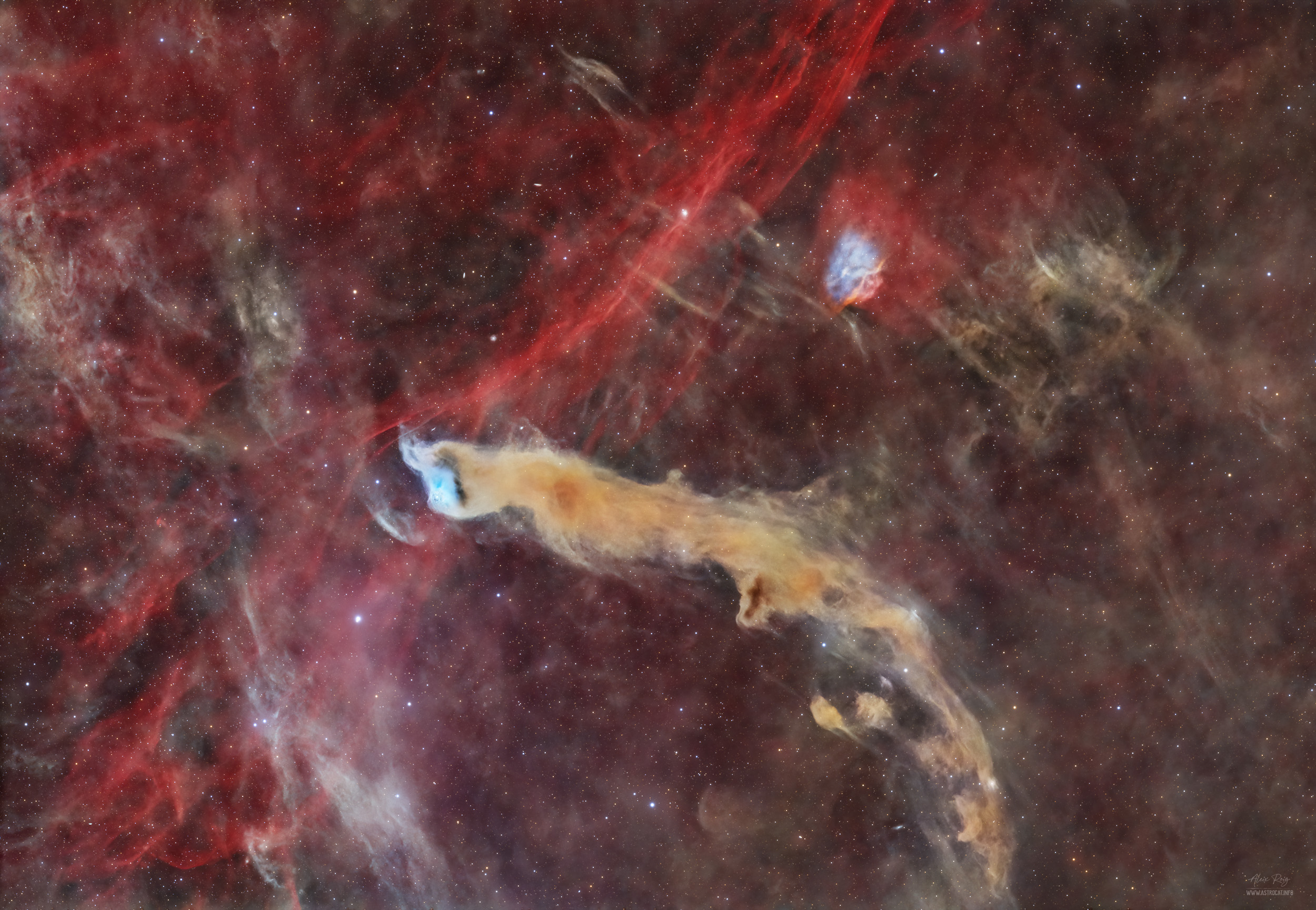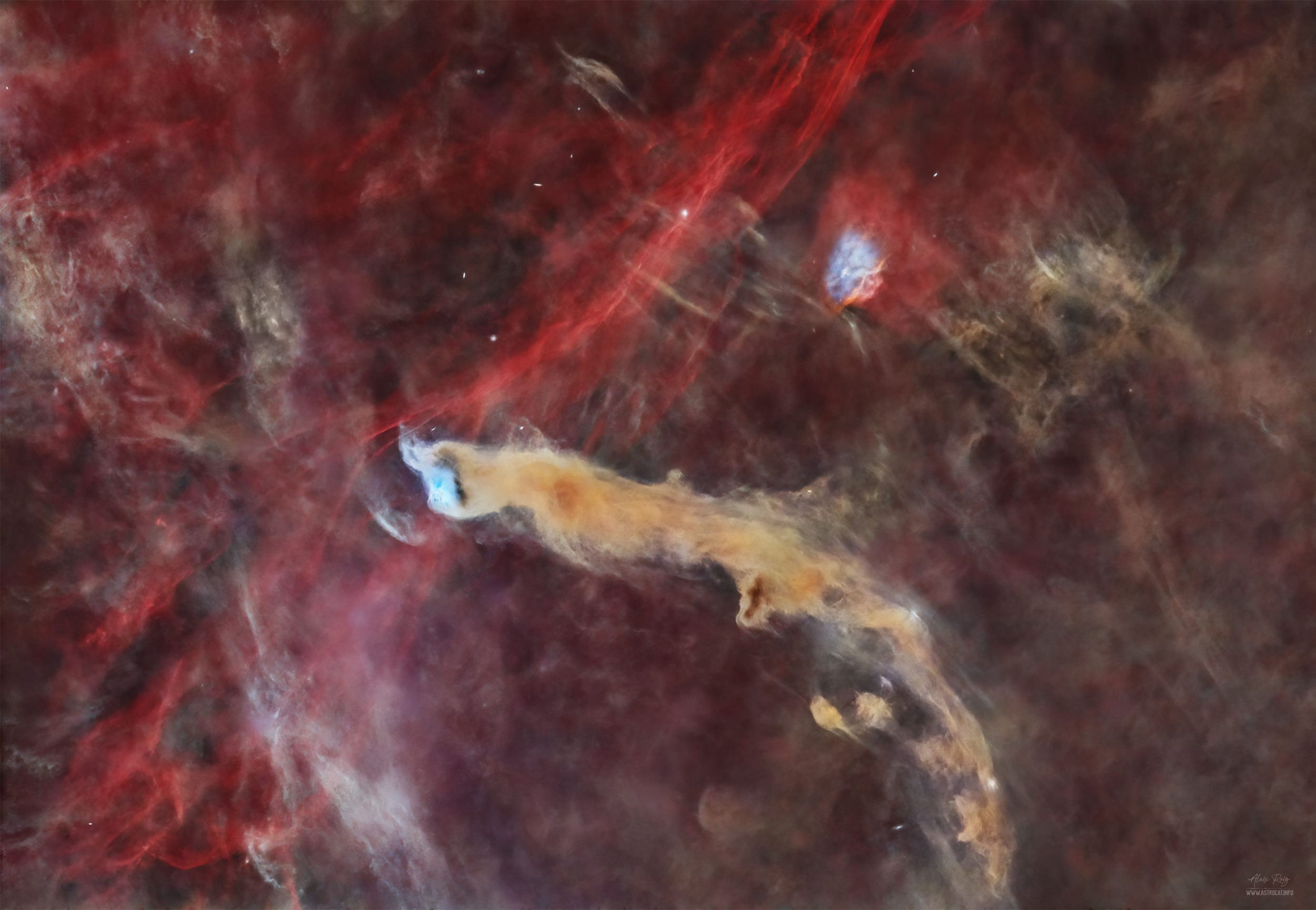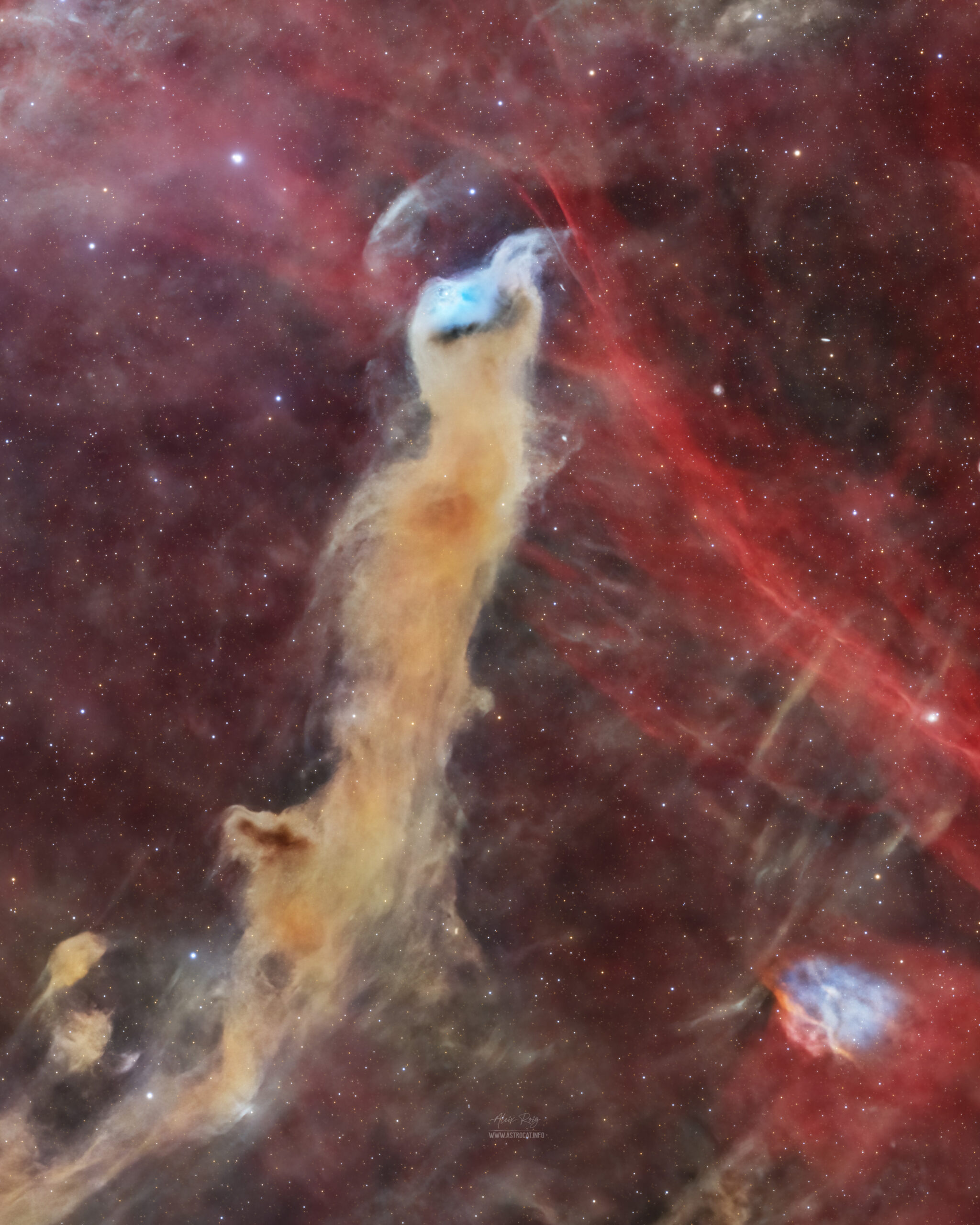Near the edge of the Cepheus Flare, we find an interesting area in the Cepheus constellation full of different types of nebulae. Being vdB 152 the most prominent, next to vdB 152 we find another interesting nebula, the brownish Barnard 175. Crossing the image we find the supernova remnant SNR G 110.3 +11.3, with its characteristic reddish color. The beautiful Dengel-Hartl 5 planetary nebula is the final crown for this star scape. This area is richly surrounded by an extended molecular cloud and pockets of cosmic dust that block light from background stars giving to the scene a depth I’ve rarely seen in other regions of our Milky Way.
Also called the Wolf’s Cave nebula or the Capercaillie due to its peculiar shape, vdB 152 is a reflection nebula that was discovered by August Kopff in 1908 and catalogued by Sidney van den Bergh in the 1960s as part of his study of reflection nebulae. This object is pretty faint and needs quite deep integrations to get the amount of details shown in the image. It lies about 1,400 light-years away from Earth. In the “eye” of vdB 152 we find the star SAO 10287, a bright 9.3 magnitude star that scatters light giving parts of the nebula a characteristic blue color. This star is not thought to have formed there, but rather is just passing through as its measured velocity through interstellar space is very different from the cloud’s velocity.
The image also shows a supernova remnant that crosses the full field of view, SNR G 110.3 +11.3. Its characteristic filaments are seen in red in the image, and photographed with the use of a Ha filter that clearly shows one of the closests SNR’s to our planet, located some 1,300 light-years from Earth. These filaments are crossed by really faint dust lane molecular clouds that gives to the scene quite an epic nebulae battle look.
In the upper-left part of the image we find another type of nebula, the Dengel-Hartl 5 planetary nebula. It is also designated as PK 111 + 11.1. It was discovered in 1979 in a survey of Palomar Observatory Sky Survey. To capture all the detail on this object I spent more than 7 hours with the [OIII] filter to show its characteristic blueish color. This filter was only used for this part of the image, while the rest of the filters were applied to the whole image. I did not find any interesting [OIII] emissions in the field that justified the use of all the oxygen data available for the full image.
Several tiny galaxies can be seen all over the field. It’s amazing how those distant worlds appear when you go deep in the integrations (32 hours of luminance datamade the job).
To capture this 80 hour 20 minutes image I used my dual Takahashi FSQ setup that allowed me to get enough data in the broadband L R G B filters, and narrow band Ha and [OIII] filters. [OIII] data was only used to show the detail on the Dengel-Hartl 5 planetary nebula.
The full image covers an area of 2º 23′ x 1º 39′ at a resolution of 1.46″/pixel.
Image Details
FSQ106:
L: 384 x 300″ (32h)
RGB: (39,22,13 x 300″) (6h 10′)
FSQ85:
Ha: 416 x 300″ (34h 40′)
[OIII]: 90 x 300″ (7h 30′)
Calibrated with darks, flats and dark-flats.
Total exposure: 80h 20′
Moon at 30% (on average)
Image resolution: 1.46”/pixel
FOV (full image): 2º 23′ x 1º 39′
Equipment
FSQ106 EDX4 + ASI2600MM + LRGB Astrodon filters + Ha3nm Antlia – with ZWO EFW 7 pos
FSQ85 + ASI294MM + SHO LRGB Baader filters – with ZWO EFW 8 pos
Mesu200 mount
Guiding with ASI120MM and ZWO Mini Guide Scope
Software
SGP, PHD2, APP, PIX, LR, TPZ, PS.
Aleix Roig, April 2024
Prades (Tarragona, Catalonia – Spain).




